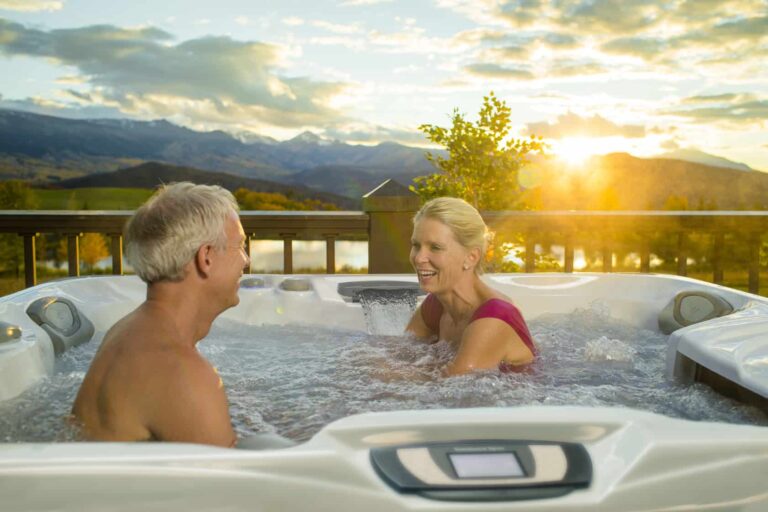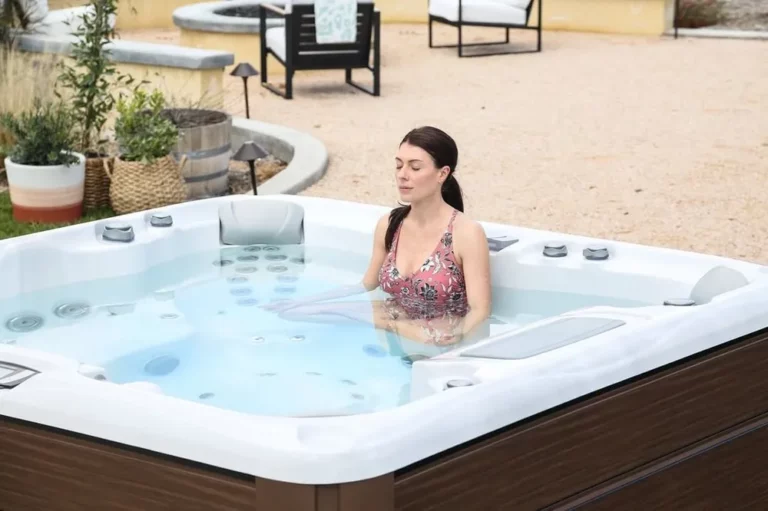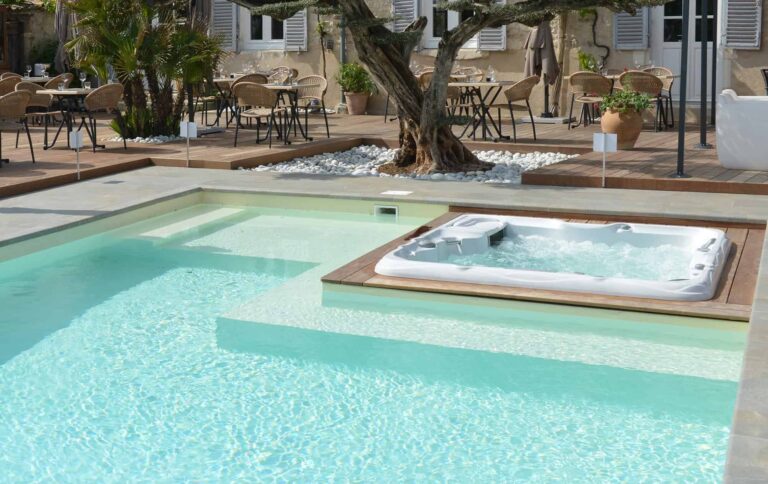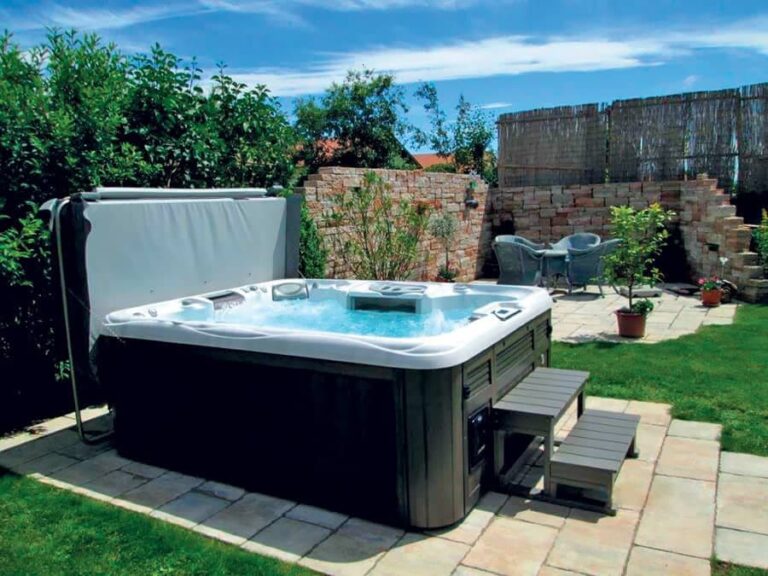Spas are a great way to relax, unwind, de-stress and enjoy quality time with loved ones. They are meant to be used regularly! With frequent use comes the need for routine maintenance. As a spa owner, it's important to understand how to properly maintain your spa so you can be sure it will always be ready when you need it and provide much-needed relaxation for years to come!
The importance of spa maintenance
Maintaining your spa not only extends its life, but also ensures that it continues to operate optimally with as much energy efficiency as possible. Even minor problems cause your system to work harder than it should, increasing energy consumption and increasing the risk of bigger problems in the future.
Spa maintenance is also important for your health and safety. Improper maintenance exposes your delicate skin to numerous risks, including:
- Irritants to the skin
- Bacterial infections
- Results
- Illness when water is accidentally ingested
When you use your spa, you want to relax, unwind and clear your mind. The last thing you want is to worry about water quality, lurking bacteria or dirt and debris as you sit back to enjoy a nice, relaxing bath. Keeping up with your spa's maintenance ensures that the water circulates properly, chemical levels are balanced and the water is nice and clean for every use.
If you ever have questions, concerns or uncertainties about your spa's maintenance schedule, it's best to consult a local spa technician to ensure your spa is properly maintained.
The benefits of spa maintenance
Think of your spa as you think of your car: it is a valuable investment that significantly enhances your quality of life and needs routine care to continue to provide value. Cars must be filled with gasoline a few times a month, brought in for oil changes, have filters and tires that need to be changed or rotated, and must be kept clean and dry to prevent paint chips and rust.
Spas contain an intricate system that allows them to give you the relaxation you need after a long day. They heat the water and keep it at an optimal temperature, use jets for a gentle massage and are filled with pumps, filters, lights and other mechanisms that keep the spa functioning. All of these components require care and maintenance to keep them clean, clear and performing optimally.
The supplies and water care you need
Fortunately, spa maintenance is a relatively simple task and requires only a handful of easily accessible tools and chemicals. Here are the products you need to get started and how they work in your spa.
Chlorine
Chlorine is a well-known and common treatment for pools and spas and plays a very important role in purifying the water. The presence of chlorine prevents bacteria, fungi and other microorganisms from surviving.
Broom
Bromine is another sanitizer for your spa and is a popular alternative to chlorine. It helps ionize the spa water by breaking up the particles in the water. If you find that chlorine is irritating, bromine is a good option because it is usually gentler on sensitive skin.
Bromine is sold in granular form and dissolves in the water to keep it clean and disinfected. Because it has a lower pH than chlorine, bromine is more effective at balancing water chemicals.
It is important to note that you can NOT mix chlorine and bromine in your spa at the same time. This can cause a very dangerous reaction. If you plan to change your sanitizing process, it is very important to first drain your spa and thoroughly clean the dispensers before adding your new sanitizer of choice.
Calcium
Calcium is a naturally occurring mineral in water. The ideal calcium level is 150 ppm, but if that number jumps too high, the water becomes too hard, and if it drops too low, the water becomes too soft. Both scenarios lead to suboptimal performance of your spa, so it is important to keep calcium levels balanced to keep your spa working properly.
If your water is too hard, you can buy a filter to balance things out, and if the water is too soft, you can add a calcium hardness booster to the water to bring the levels to 150 ppm.
Biguanides
Biguanides are another alternative to chlorine and are a popular choice for hot tub owners who want to clean their spa in a more natural way.
Biguanides are gentler on skin and hair and can withstand high temperatures better than chlorine and other disinfectants, but they do have some drawbacks. Some of the most common complaints are:
- Reduced water clarity
- Foaming
- Cannot break down organic compounds such as body fluids
- Immunity of microorganisms
- Higher spa maintenance costs
Spa balancers
Spa balancers are used to:
- Improve water clarity and remove turbidity
- Improve filter performance
- Balance pH
Clarifiers are a great short-term solution if you are in trouble and need to give your spa a quick boost. They work by sucking in and enlarging dirt and debris so that the filter can more easily capture and remove the particles.
While there is no limit to how often you can use clarifiers, it is best to seek a more permanent solution if you find you are having persistent problems with the clarifier, filter performance or pH.
Enzymes
Enzymes are protein molecules that act as catalysts for other chemical reactions. They help remove non-living organisms such as lotion, oil, cosmetics and hair products from your spa to keep it clean and sanitary.
Filter cleaner
The filters in your spa work tirelessly to keep your spa free of dirt and debris. In turn, it is important to give them a little TLC with a filter cleaner. This keeps them free of particles to ensure they can do their job properly and keep your spa clean.
Alkalinity booster or pH reducer
The pH of your spa is the measure of the alkalinity of the water. Having a high pH means the water is very alkaline and needs some acid to balance things out. Two of the most common pH reducers are hydrochloric acid and sodium bisulfate.
On the other hand, if the pH is too low, it means the water is too acidic and needs an alkalinity booster to maintain a healthy balance.
Schock
You may be wondering why you need to give your spa a shock if you are already using chlorine or bromine. Shock is used as needed to give your spa a nice big dose of chlorine (or a non-chlorine option) to break down organic material that can cause odors and cloudy water.
If you need help choosing the right products for your spa, you should consult an expert or spa dealer to make sure your spa gets the care it needs!
Spa maintenance routine: what to do and how often
Now that you have all the tools you need to maintain your spa, it is important to note what you need to do and how often you need to do it! Depending on the task, some maintenance only needs to be done on an annual basis, while other tasks are required monthly, seasonally or weekly. Here is a brief overview of spa maintenance based on their frequency:
Annual spa maintenance
- Inspect your spa for signs of leaks or damage
- Have a professional maintenance technician check your spa to report any hidden or serious problems
Seasonal spa maintenance
- Drain your spa and scrub the inside thoroughly
- Soak and clean the filters
- Flush the pipes to remove any biofilm buildup
Monthly spa maintenance
- Clean the lid
- Check all pipes and jets for signs of damage or blockage
- Give the filters a chemical bath
- Clean the enclosure of your spa
Weekly spa maintenance
- Test water chemistry no less than twice a week
- Shock the water
- Clean the surface of the spa
- Make sure the cover is secure
- Rinsing out filters
The core of spa maintenance
Once you develop a routine, maintaining your spa becomes a quick and easy task. With a few key products, a little time and a few tips and tricks, your spa will continue to function beautifully for years to come.
If you ever run into trouble or have a question about maintaining your spa, it's best to have a reliable service technician on standby to provide support when you need them. Since regularly handling chemicals can be dangerous if done incorrectly, consider having a professional show you the way first, to ensure your spa is a safe, relaxing oasis for you and your family!





 by
by